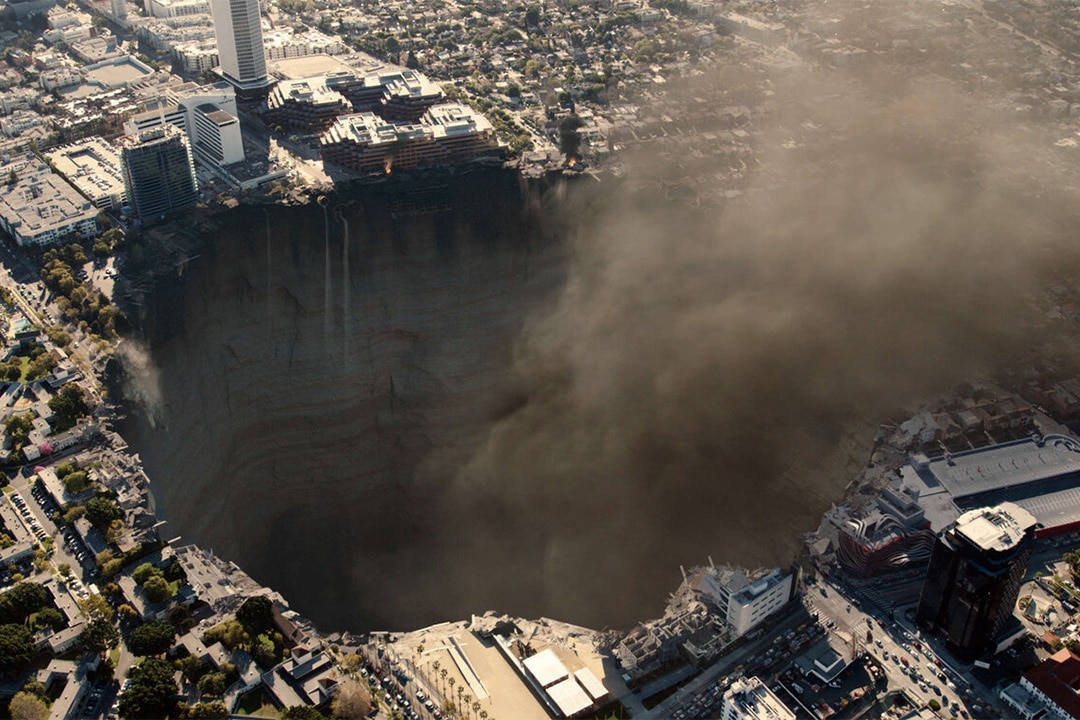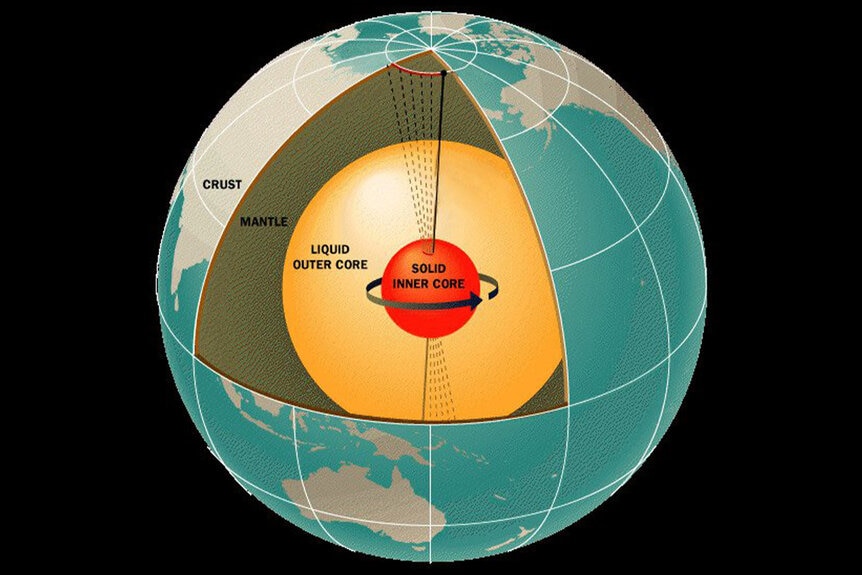Did the Earth's core really stop spinning or reverse direction?
If the Earth stops spinning, will the planet explode? (Hint: no)

In NBC’s science fiction drama La Brea (now streaming on Peacock!), a sinkhole opens up under the La Brea Tar Pits, swallowing a few hundred people along with buildings, vehicles, and whatever else happened to be within its circle of influence. When the survivors come to at the bottom of their fall, they find themselves in an unusual but strangely familiar world.
In La Brea, all of the weirdness inside of the Earth’s interior can be laid at the feet of a weird time travel portal, which sent the survivors 12,000 years into the past. In the real world, there aren’t any time portals beneath the Earth’s surface (as far as we know), but things underground might be a little weirder than we realized, at least according to a recent study published in the journal Nature Geosciences.
The central layer of the Earth is believed to be a solid ball of iron and nickel metal about 1,500 miles across. That’s roughly the same size as Pluto. Surrounding the inner core is a layer of liquid metal which makes up the outer core. That liquid barrier between the core and the surface allows it to spin freely inside the interior space of the planet, almost like a three-dimensional ball bearing.
RELATED: Swallowed by sinkholes: The science behind 'La Brea'
Of course, we can’t see directly inside the center of the Earth, so we have to infer what’s going on in indirect ways. One of the primary ways that geologists do that is by measuring the ways seismic waves from Earthquakes move through the interior of the planet. Variations in the ways seismic ways travel can reveal information about the material they are traveling through. When an earthquake jiggles the earth, it’s sort of like giving the planet an X-ray. But even X-rays can only give you a two-dimensional representation of a more complex thing, and only at the time the image was taken. Precisely what’s happening in the core of the Earth, and how the core interacts with the rest of the planet, remains a matter of some debate.
The new study, carried out by Xiaodong Song and Yi Yang, researchers from China’s Peking University, has been making all sorts of headlines because it supposedly reports that the direction of the core’s rotation has stopped or reversed. That’s the sort of vague scientific language which could either mean absolutely nothing or could herald the events that start the apocalypse. In this case, it’s much closer to the former.
In the study, researchers inferred the rotation of the inner core by comparing temporal changes between repeated seismic waves believed to be traveling the same path through the inner core. In essence, bang on the Earth’s pipes and listen to what happens. They compared seismic readings from the early ‘90s with more recent readings and found that the temporal changes between repeated waves had changed. In the past 10 years, the change between repeated waves was much smaller and they therefore conclude that the rotation of the core had recently paused and may even have reversed directions.
That’s the sort of thing that makes headlines. You hear that the Earth’s core stopped spinning and it drops a ball of searing hot metal into your gut. You don’t know why the core spins or what it means to have stopped, but you know it was doing something and now it isn’t and that seems bad. The reality is a little more complicated and a lot less frightening.
Song and Yang next looked at seismic records from the South Sandwich Islands going back to 1964, which they suggest illustrates a similar transition point in the core’s rotation. They therefore suggest an approximately 70-year oscillation period during which the core spins first in one direction, then slows and stops, then spins in the other direction, then slows and stops, completing a full cycle.
They suggest that this oscillation may have some minor impact on the length of a day or the Earth’s magnetic field, but nothing that you’re likely to notice on a day to day basis. The point is, if it’s happening, then it has been happening for a really long time. If this was an apocalypse-level event, then the world would end on a fairly regular basis.
What’s important to clarify – and, in fairness to the authors, they do point this out at the top of their paper – is that the reported rotation is relative to the mantle, and is a relatively small effect. The direction of the core’s rotation isn’t actually changing, but it appears to be from our perspective on the planet. What’s really happening is the entire Earth is spinning in the same direction, you might have heard about that, it happens once per day. Inside of the Earth, the inner core is also spinning in the same direction, but that spin might slow down or speed up every once in a while. If it slows down to slower than the Earth’s rotation, it looks like it’s spinning one direction. But if it’s spinning faster than the rest of the Earth, it looks like it’s going the other way. It’s the geological equivalent of a passing car speeding up and slowing down on the freeway. From your perspective, it looks like the car is moving back and forth, but it’s always moving quickly in the same direction.
With that in mind, claims that “the core’s rotation came to a halt” might be technically true, but totally misleading. The core didn’t stop spinning, it’s just that the rate of spin matched the rate of the rest of the planet’s spin. It looked still because we were vibing.
It’s also worth noting that a number of other studies have given entirely different time frames for the core’s supposed rotation variation relative to the surface. The proposed oscillation periods have ranged from only a handful of years to several decades, but even geologists disagree. The problem appears to be that all of the proposed models fit a specific set of data, but not necessarily the wider behavior of the planet’s interior. It might be like trying to describe a mural from three quick glances at disconnected pieces. Instead of describing the way the core really behaves, it’s more likely that this recent study adds a new puzzle piece to a slowly growing picture. One we will one day be able to fill in.
Until then, you’ve got a better chance at finding the apocalypse in a time travel portal at the bottom of a sinkhole than you do at the center of the Earth. So catch La Brea, streaming now on Peacock!





























